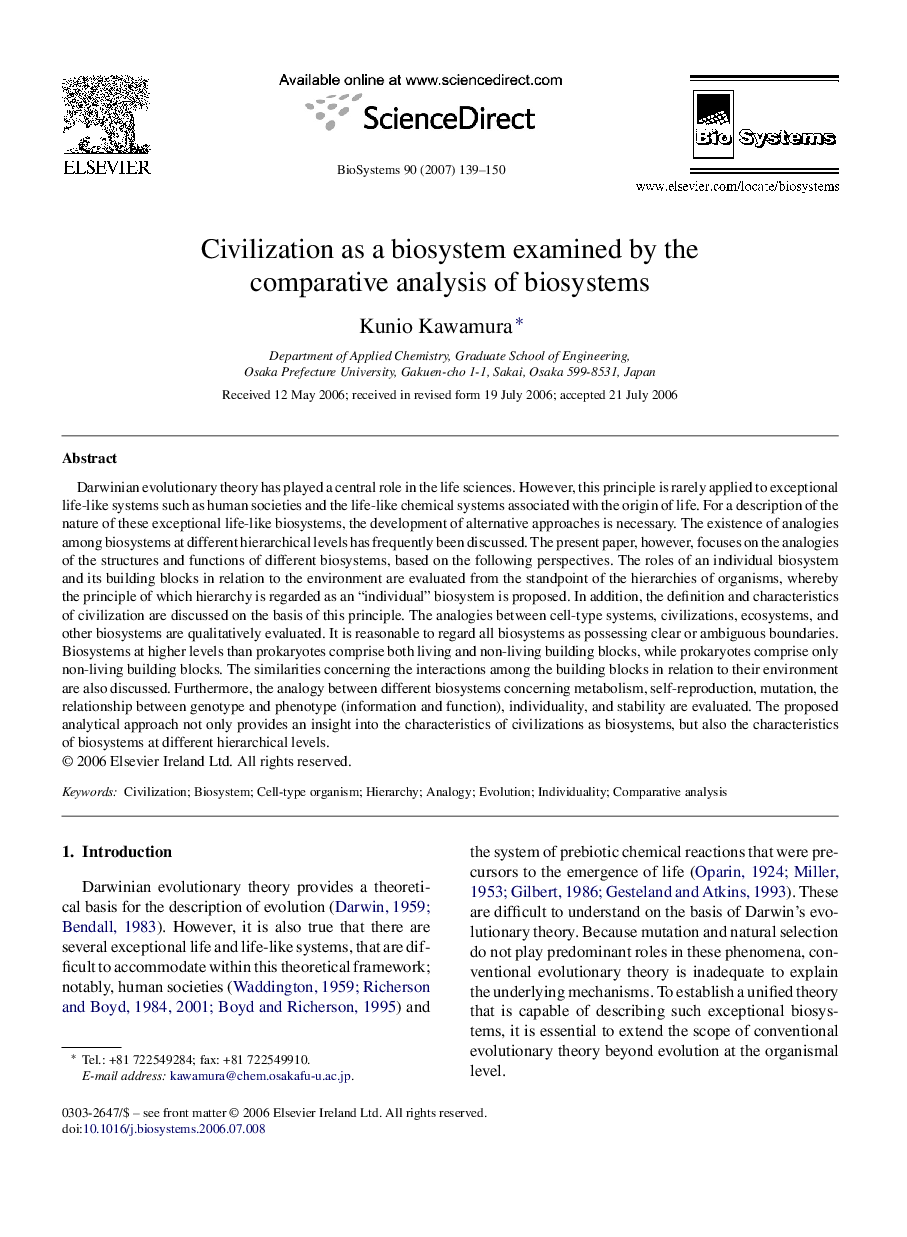| Article ID | Journal | Published Year | Pages | File Type |
|---|---|---|---|---|
| 2076826 | Biosystems | 2007 | 12 Pages |
Darwinian evolutionary theory has played a central role in the life sciences. However, this principle is rarely applied to exceptional life-like systems such as human societies and the life-like chemical systems associated with the origin of life. For a description of the nature of these exceptional life-like biosystems, the development of alternative approaches is necessary. The existence of analogies among biosystems at different hierarchical levels has frequently been discussed. The present paper, however, focuses on the analogies of the structures and functions of different biosystems, based on the following perspectives. The roles of an individual biosystem and its building blocks in relation to the environment are evaluated from the standpoint of the hierarchies of organisms, whereby the principle of which hierarchy is regarded as an “individual” biosystem is proposed. In addition, the definition and characteristics of civilization are discussed on the basis of this principle. The analogies between cell-type systems, civilizations, ecosystems, and other biosystems are qualitatively evaluated. It is reasonable to regard all biosystems as possessing clear or ambiguous boundaries. Biosystems at higher levels than prokaryotes comprise both living and non-living building blocks, while prokaryotes comprise only non-living building blocks. The similarities concerning the interactions among the building blocks in relation to their environment are also discussed. Furthermore, the analogy between different biosystems concerning metabolism, self-reproduction, mutation, the relationship between genotype and phenotype (information and function), individuality, and stability are evaluated. The proposed analytical approach not only provides an insight into the characteristics of civilizations as biosystems, but also the characteristics of biosystems at different hierarchical levels.
